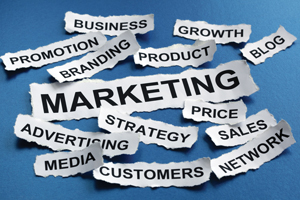 By Bastin Gerald
By Bastin Gerald
In a digital world, where everything is driven by technology, verifying the effectiveness of the marketing initiatives, with numbers as proof of success, is the foremost priority of a marketing agency. This numbers-driven management method has created a paradigm shift in how marketing agencies can measure success, growth and performance.
In a highly competitive marketing agency landscape, you need to have an undeterred focus on finances, effectiveness of the campaigns, performance and profitability in order to succeed and grow. This article uncovers the top 10 marketing agency metrics that you should measure to improve profitability.
What are marketing metrics?
Marketing metrics are the quantitative measures with which marketing agencies track, measure, and analyze their business performance and the effectiveness of their marketing activities. These marketing metrics help agencies constantly monitor the performance of campaigns, finances and business performance, and make improvements wherever necessary.
The primary objectives of a marketing agency would be to build brands, create visibility for those brands, inspire audiences to reach out, generate leads for the clients, communicate with the leads through various channels and push them towards sales conversion. In line with these priorities, marketing agencies track many different marketing metrics to improve the marketing ROI (return on investment) and ensure that their marketing campaigns are effective. Marketing metrics also let agencies make data-driven decisions that can have a significant impact on profitability.
Importance of marketing agency KPIs
Marketing metrics and marketing agency KPIs are important for agencies because:
- They let you measure and track progress of your business and identify areas that need improvement.
- They give you important insights and let you know if your marketing campaigns are achieving the goals and making the desired impact for your clients.
- When your campaigns are not performing as expected, they help you identify the reasons for the failures, and enable you to tweak your marketing strategy.
- They give you clarity at every stage of planning and executing a marketing campaign, since marketing KPIs are integral part of your strategy – you need to set goals for the campaign, state how you will achieve them, how you define success and how you will measure success, in the planning phase itself if you have to track KPIs. This in turn gives clarity.
- Since your marketing KPIs are designed to indicate how much you have achieved against your goals, they help you evaluate your performance, find the right priorities, align and realign the teams to the goals.
- They alert you when the performance goes down and help you identify the challenges in the immediate future, so that you can prepare the team, be proactive and tackle them.
Ten marketing metrics that marketing agencies should track, and how to calculate them
There are many marketing metrics that agencies should track in order to improve profitability. Some of the most important ones include:
1. Cost Per Lead (CPL)
One of the most important goals of marketing is to bring quality leads. Marketing agencies spend on digital ads, sponsored social media posts, SEO to bring organic traffic and various other channels to bring quality leads to the clients. The effectiveness of your marketing initiatives to generate leads can be measured by calculating the amount the agency spends on bringing every lead. The more leads you can generate within a given budget the less cost per lead you can achieve. The goal is to generate more leads from less spending. Ideally, the cost per lead should be less than the gross profit you achieve per sale.
- Measuring cost per lead helps you keep track of your spending on lead generation in relation to the results you are producing.
- It helps determine whether the spending is justified and sustainable.
- Periodically measuring cost per lead helps paint a bigger picture over a longer period, identify the trends, and allocate your resources accordingly and proactively for lead generation at any given period of time.
You can calculate cost per lead by dividing the total marketing expenditure by the total number of leads generated.
For instance, if your marketing spend per month is $500 and the number of leads generated during that month is 20, then Cost Per Lead = $500/20 = $25
2. Revenue Per Client (RPC)
One of the foremost metrics that any business should be measuring is the revenue. Ultimately every profit-making business strives to bring in as much revenue as possible. Keeping track of revenues is indispensable for any business. When it comes to a marketing agency, success can be measured by how much revenue each client brings to your agency for the amount of resources spent working for them. So, it is crucial to periodically measure revenue per client (RPC).
Measuring Revenue per client:
- Gives you insights on the value that every client brings to your marketing agency
- Lets you track the highs and lows in revenues from every client over a period of time, and find out if you are over or under-servicing your clients.
- Provides you with the insights with which you can make decisive changes to your marketing strategy and business model, and find ways to increase your total revenue
- Enables you to set more accurate business goals and targets
You can do a basic revenue-per-client calculation by dividing the total revenue by the number of clients you have. For instance, if total annual revenue is $1000000 and you have 20 clients, then
RPC = $1000000/20 = $50,000 per annum
3. Gross Margin
When you are running a marketing agency, you have to make sure that your pricing is perfect. This is crucial for your profitability. Gross margin is one of those crucial marketing agency KPIs that helps you track your profitability.
Measuring gross margin helps you:
- Fix the right rates for your services
- Track profitability over time
- Identify how much profit you gain from every work you take up from every client
- Determine which services that you offer provide you with the most/least profits
- Make data-driven decisions on cost cutting and achieving profitability
You can calculate gross margin by subtracting your cost of goods sold and labor costs from your gross income, which is the revenue that is obtained after paying for pass-through expenditures incurred (such as paying for the advertizing slots in a newspaper, sponsored posts on social media, etc.)
Gross Margin = Gross Income – Cost of goods and labor costs
For instance if your gross income over a month is $100000 and the cost of goods sold and labor costs amount to $45000, then Gross Margin = $100000 – $45000 = $55,000
Gross margin percent = $55,000/$100000 x 100 = 55 percent
4. Net profit margin
Net profit margin is one of the most important marketing KPIs. Net profit margin helps you measure the profits that your marketing agency has made after paying for all the expenses including material and labor costs, operating expenses, taxes and overhead expenses.
By measuring net profit margin, you can:
- Ensure efficiency and profitability
- Make sure that your pricing strategy is right
- Improve your bottom line in the long term
- Benchmark against the industry standards
- Give your investors and other stakeholders key insight son the performance of your marketing business so that they can take informed decisions
You can calculate the net profit margin by dividing the net profit, which is the difference between total revenue and total expenses, by the total revenue.
For instance, if your total revenue per month is $100,000 send your total expenses per month is $75000, then Net profit margin percentage = ($100000 – $75000)/$100000 x 100 = 25 percent
 5. Marketing Qualified Leads (MQL)
5. Marketing Qualified Leads (MQL)
In the digital world, achieving sales conversion is a challenge. Generating leads, nurturing them and leading them to the sales funnel requires constant effort and marketing communication in the form of sharing knowledge resources, product recommendations, reviews, offers, etc., through various channels. At the same time, marketing efforts need to be targeted and precise. Sending emails to leads that are not interested in even opening the emails costs resources without bringing any tangible benefit to your business. This is where one of the important digital marketing measurement metrics comes into play, namely marketing qualified leads.
Marketing qualified leads are the contacts/leads/ potential customers who are constantly engaged with your marketing initiatives and show interest in the products that you are marketing.
Marketing qualified leads is a metric that gives you an idea about:
- The number of prospective customers you may have at any given time
- The potential sales that you may be able to achieve in the near future
- The effectiveness of your marketing campaigns aimed at lead generation
- Your ability to collect quality leads
Marketing qualified leads – examples
A lead may be considered as a marketing qualified lead when he/she:
- Opens your marketing emails regularly
- Goes through your product page
- Signs up for your newsletter
- Ask doubts about the products
You can measure marketing qualified leads only by observing the customer journey and tracking the behavior of leads on your site.
6. Sales Qualified Leads (SQL)
Sales qualified leads are among the digital marketing measurement metrics that are crucial for your marketing agency. Sales qualified leads are similar to marketing qualified leads. However, unlike marketing qualified leads that merely show interest in your marketing communication, the brand and the products that you are marketing, sales qualified leads also show interest in purchasing the products.
By counting the sales qualified leads, you can:
- Identify potential leads who will soon make a purchase and convert
- Make accurate sales projections for the near future
- Verify the effectiveness of your lead generation activities
- Determine how many of the leads that your marketing efforts brought in are good enough to convert
- Decide whether you want to spend more or less to acquire these leads
Sales qualified leads – examples
A lead may be considered as a sales qualified lead when he/she:
- Adds products to the cart
- Interacts with your salespersons regarding the products and their features, offers, price, etc.
- Gets a quote and negotiates rates
- Requests a product trial/demo
Sales qualified leads can be identified by observing the customer journey, especially in the sales funnel.
7. Click-Through Rate
Click through rate is one of the most indispensable digital advertising metrics for marketing agencies. When you run a targeted ad campaign or an email marketing campaign, the most crucial questions to ask are, whether they reached the right targeted audience and whether they created the intended impact. Click through rate is one of the marketing metrics that helps you find answers for those aforementioned questions.
Click through rate is the percentage of clicks/actions that a digital ad or an email marketing campaign generated, against the number of target users it reached.
By calculating click through rate, you can:
- Measure the effectiveness of your campaigns
- Identify whether you have reached the right audience or not
- Determine whether your target audience finds the ad/communication relevant or not
- Monitor the performance of your digital ads and email marketing campaigns
- Make changes to your campaigns, change key message if needed, and fine tune your demographic reach based on their performance
You can calculate click through rate by dividing the number of times your digital ad was clicked by the number of times it was displayed.
For instance, if your digital ad was displayed 100 times to various individuals, and if it was clicked 2 times, then your
Click through rate = 2/100 x 100 = 2 percent
If you sent a marketing email to 1000 contacts, and if 50 of those contacts clicked the links you have provided in the email, then the click through rate of the email campaign is
50/1000 x 100 = 5 percent
8. Net Promoter score
The priorities of marketing include helping clients retain their end customers in the long run and providing a great brand experience to those customers so that they will be happy enough to spread the word positively about the brand. In the digital era, every customer’s experience matters, as it is easy for the customers to publicly review a brand, which can have a great impact on how your target audience as a whole perceives your brand.
Net promoter score is among those few digital marketing measurement metrics that measure customers’ perception of the brands that your marketing agency works with. Net promoter score encompasses key parameters for maintaining brand value, such as customer loyalty, customer satisfaction, customer advocating for the brand, etc.
Net promoter score helps to:
- Identify what the customers think about a brand
- Determine the impact of your marketing efforts and the resulting customers’ perception of the brand
- Find out whether the brand is capable of retaining customers in the long term
- Tweak branding and marketing messages to make the client’s brand more appealing to their end customers.
You can measure net promoter score through surveys with a rating scale, filled by the end customers.
- Customers who give a rating of 9 or 10 in the scale of 10, then they will be deemed as promoters; they are expected to remain loyal to the brand and spread the word about it positively.
- Customers who give a rating of 7 or 8 will be seen as passives, i.e., the ones who neither have positive or negative things to say about your brand and will consider any competing brand. Since they do not have much impact on the brand perception, they are usually left out of the NPS calculation.
- Anyone who rates the brand below 7 will be considered as a detractor, i.e. dissatisfied with the company and its products, and may spread the word negatively.
In order to calculate net promoter score, you need to subtract the percentage of detractors from the percentage of promoters, discarding the percentage of passives.
For instance, if there are 90 percent promoters, 3 percent passives and 7 percent detractors amongst the respondents of the survey, then the net promoter score would be 90 percent – 7 percent = 83 percent.
9. Primary lead sources
When you have an omnichannel marketing strategy, you have to be judicious about how much resources you spend for your marketing efforts through every channel. You can generate leads through various channels such as digital ads, organic search results, social media, etc. However, depending on the nature of the business and where your target audience mostly is, some sources may bring more leads than others. In that case, you may have to focus on that particular channel and find ways to optimize it.
Primary lead sources are one of the marketing metrics that enables you to identify the channel/source that brings you the most number of leads.
By identifying the primary lead sources, you can:
- Find out the channels that are most used by your target audiences
- Compare the budgets that you spend on different lead sources/channels
- Determine which channel is the most cost-effective in generating leads
- Optimize your marketing/lead generation strategy and focus on the sources that bring the greatest number of leads with the least amount of resources spent.
You can track primary lead sources by counting the number of leads that you get through every single channel/source.
10. Engagement rate
Engagement rate is one of the most important marketing KPIs for measuring the impact of your social media marketing initiatives. Social media plays an important role in promoting customer engagement. Engaging with customers and the target audience goes along in managing customer relations and creating a positive outlook for the brand. Measuring engagement rate helps to:
- Measure the engagement level of the followers of the brand on social media
- Understand what the target audience think about the brand
- Change the customer relationship strategy based on insights and improve engagement on social media
- Tweak brand messaging, and then find ways to make the brand more endearing to the target audience
You can calculate the engagement rate by dividing the number of actions taken by the followers, such as reacts to the post, comments, replies to others’ comments, queries, etc., by the number of followers, and multiplying the number by hundred.
For distance, if the social media account of your client brand has got 1000 actions from 2500 followers, then Engagement rate = 1000/2500 x 100 = 40
Frequently Asked Questions
- What are the KPIs for a marketing agency? Marketing KPIs are the quantitative measures with which marketing agencies track, measure, and analyze their business performance and the effectiveness of their marketing activities
- How do you evaluate a marketing agency? You can evaluate a marketing agency by measuring various business, financial, and sales and marketing metrics periodically.
- How do marketing agencies measure success? Marketing agencies measure their success by the performance of their financial KPIs and metrics related to the performance of their marketing campaigns.
- What are examples of marketing metrics? Marketing Qualified leads, Cost per lead, customer lifetime value, click through rate, etc.
Bastin Gerald is the CEO and founder of Profit.co, an intuitive cloud-based SaaS platform, integrating OKRs and task management plus 300 other data-driven metrics to help companies successfully implement the model and reach new heights. Profit.co helps companies focus, align and engage teams for optimal productivity and company success. To learn more, visit https://www.profit.co/.




